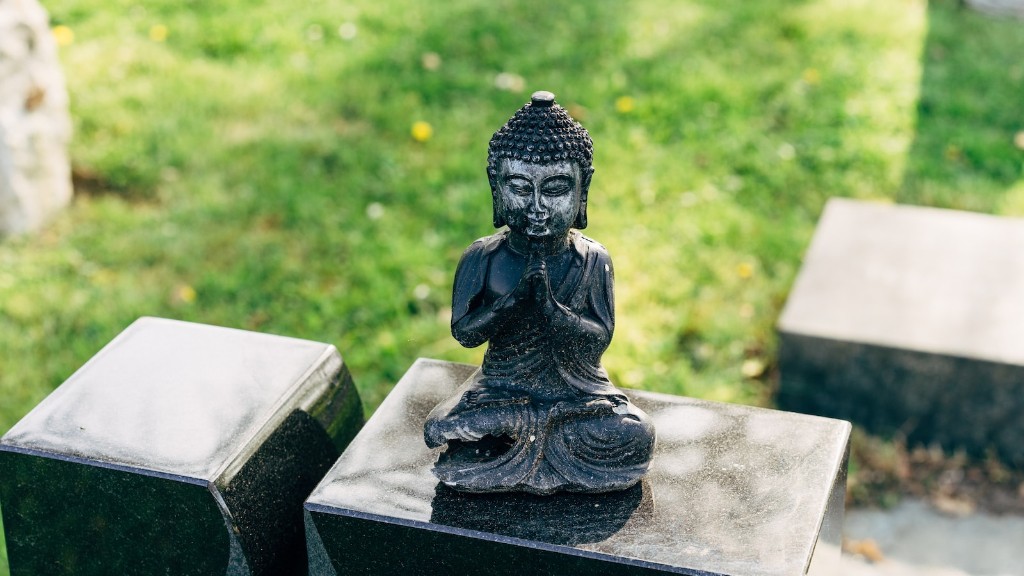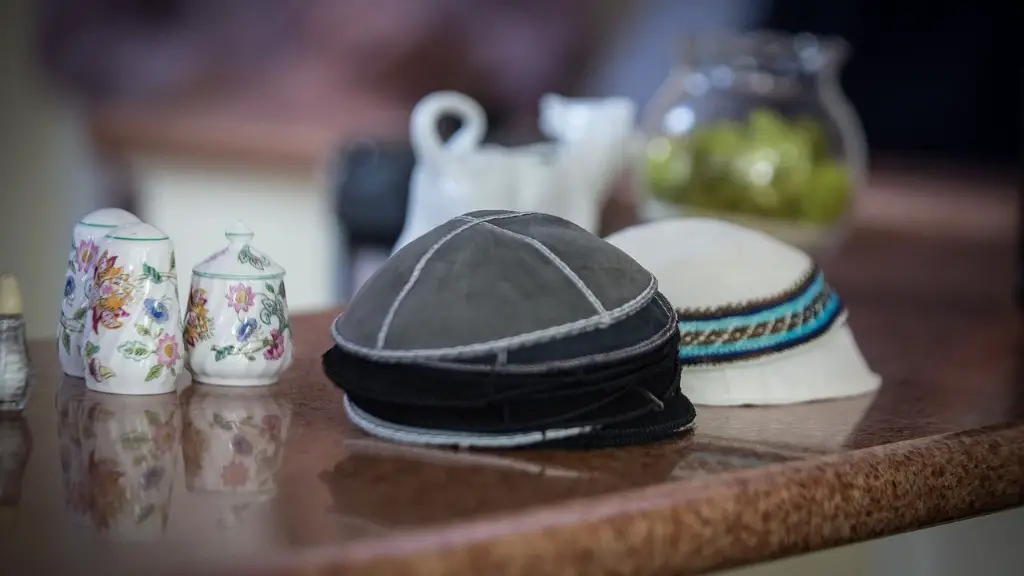Symbolism, Meaning and Uses of Hamsa
The Hamsa is a traditional Middle East symbol of protection that can be found in many religions and cultures, but most commonly in Judaism. Also known as the Hand of Miriam or Hand of God, this symbol is associated with good luck, health and fortune. It is believed to ward off bad spirits, bring luck and grant it’s owners wishes. A Hamsa is usually made of metal and comes in various shapes, sizes and colors and often features designs of a stylized eye or hand. It is widely used as a wall decoration and commonly presented as a gift and a sign of friendship.
The history of the Hamsa is unclear and still disputed, though it is known to be of ancient origins. The exact meaning and symbolism of the Hamsa in Judaism has been open to interpretation for centuries, but some of its meanings remain consistent. The Hamsa is mainly seen as a symbol of protection and divine guidance from God, and it is believed to bring joy and good fortune to its owner.
For many Jews, the Hamsa symbolizes the hand of God, representing divine protection for all who seek refuge in His name. The Hamsa is a reminder of God’s love and presence, a symbol of God’s grace and power in our lives. It is believed that the Hamsa offers spiritual protection and guidance against the forces of evil and provides strength, good luck and blessings to its bearer.
Many people see in the Hamsa a powerful force of protection. Some people even carry it around as a talisman or amulet to ward off negative energy and attract good fortune. In Judaism, it is believed that the Hamsa will protect one from physical and spiritual harm, keep our lives on the righteous path, and bring joy and success.
The Hamsa is also a reminder to be humble and grateful for the divine protection it offers us. It serves as a reminder that no matter what difficulties or struggles we may face in life, we should always keep our faith in God and look for His guidance. It is also a reminder to always remain open to His blessings and mercy.
Folklore and Literary Writings
The Hamsa has held a spiritual and symbolic meaning to Jews for centuries and its symbolism is rich with references. Folklore and literary writings have suggested numerous interpretations of the Hamsa, often incorporating the number five (“Hamsa” literally meaning “five”). Some say the number five is a reference to the five books of the Torah, the five commandments, or the five imperfections of the human condition. Still others say that the five points of the Hamsa represent the five fingers of the hand, each pointing in different directions and serving as a reminder to be vigilant in defending oneself.
In many texts, the Hamsa is viewed as a sign of strength and courage, a reminder to stay strong and persevere through trials and tribulations. It can also be seen as a sign of hope and optimism, a reminder to look on the bright side and count the blessings in life. It is said to be a sign of hope, love, and mercy from God, an assurance that He is watching over us and will help guide us.
In Jewish tradition, the Hamsa also symbolizes a double-edged sword. It reminds us to be responsible for our actions and to uphold the highest standards of justice. The Hamsa is seen as a reminder to think before we act, to treat others with respect, and to be mindful of our own words and deeds.
No matter which interpretation is used, the Hamsa is recognized as a symbol of divine protection and guidance. From a deeper, spiritual perspective, the Hamsa may be seen as an expression of our connection to and faith in God. By wearing the Hamsa, we remind ourselves of His presence and power in our lives. Each time we look at it or use it, we remember that God is by our side and that He will help us overcome any obstacles and be successful in our endeavors.
Hamsa in Everyday Life
The Hamsa is widely used in everyday life and it can be found in homes, offices and even in cars. People often put up pictures and decorations of the Hamsa in their homes, as a reminder of their faith in God and His protection. There are also many different types of Hamsa jewelry and clothing, allowing people to wear the Hamsa as an expression of their faith. The Hamsa is a personal reminder of the power and presence of God in our lives, and a source of comfort and protection to all who embrace its spiritual significance.
Although some interpretations of the Hamsa is unique to one religion or culture, it is believed to bring protection and good fortune to all. Its symbolism and power crosses religious and cultural boundaries, and its use is becoming increasingly popular all over the world. Whether it be for decorative or spiritual purposes, those who keep the Hamsa with them can be assured of the protection, guidance and blessings that it grants.
Contemporary Uses of Hamsa
The Hamsa is no longer just used as a protection symbol in Judaism and other spiritual beliefs. In recent years, its usage has extended to fashion, art and architecture, where the Hamsa is used to add a touch of beauty, spirituality and protection to an item. It is also seen as a sign of solidarity and is often used by fashion designers to add a bit of edge or to make a statement. The Hamsa is also used as an element of interior design, bringing its symbolism of protection, luck and good fortune to a home or workplace.
The Hamsa is becoming increasingly popular in modern culture, and its symbolism is an inspiration for many people around the world. Regardless of its interpretation, the Hamsa remains a powerful reminder to be mindful of our words and deeds and to lead an honest and meaningful life. It is an eternal symbol of protection, hope and good fortune, and a source of strength and inspiration for all who embrace its spiritual significance.
Contemporary Artistic Representations
The Hamsa is an inspiring symbol with its message of faith, hope and protection, so it’s no surprise that it has become a popular motif in modern art. Contemporary artists have created some remarkable representations of the Hamsa, often enhancing its symbolism of protection and good fortune. From digital prints to sculptures and jewelry, the Hamsa is now found in diverse forms and it remains as a powerful reminder of the protection, guidance and blessings of God.
The modern Hamsa is no longer specific to one religious or cultural belief. It has become a universal symbol of protection and good luck, and is recognized by people of all backgrounds and beliefs. Its symbolism remains true to its original meaning, and it continues to be a powerful reminder of God and His love and grace in our lives.
Spiritual and Cultural Significance
The Hamsa is deeply embedded in the cultures and spiritual beliefs of the Middle East and its impact has been far-reaching. It is widely used as a symbol of protection, luck and good fortune and is worn by people of many different backgrounds and beliefs. It continues to be a powerful reminder of God’s love and wisdom, and His presence and protection in our lives. The Hamsa serves as a source of comfort and strength, and a reminder to stay strong in our faith and persevere, no matter what obstacles we may encounter.
The Hamsa also has great cultural and historical significance. It is deeply associated with Middle Eastern culture and is often used as a symbol of solidarity. It is an expression of faith, hope and protection, and its symbolism transcends cultural and spiritual beliefs. No matter what culture or religion one belongs to, the Hamsa remains a powerful source of comfort, strength and spiritual guidance.
Conclusion
The Hamsa is a powerful symbol with a long history and a deep spiritual meaning. It is widely associated with good luck, protection and divine guidance, and its symbolism has transcended cultural and spiritual beliefs. From wall decorations and jewelry to fashion designs, the Hamsa has become a universal symbol of peace, luck and protection. It serves as a reminder of God’s love and presence in our lives, and a source of comfort and strength in times of adversity.



